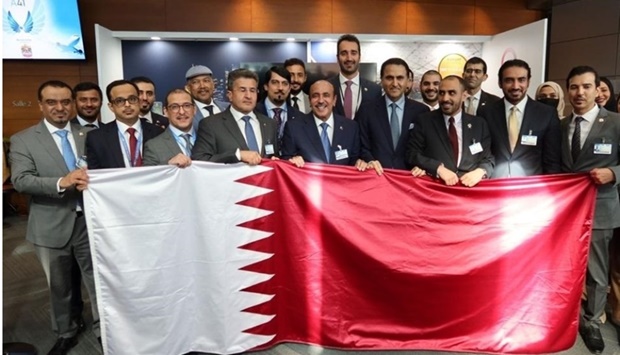The result also provided a history-making moment for HE the Minister of Transport, Jassim Saif al-Sulaiti, as under his leadership the country joins the executive committee of the UN organisation for aviation for the very first time.
The International Civil Aviation Organization is a specialist agency of the United Nations set up to define international safety, environmental and operating standards for civil aviation. Currently more than 190 countries are members, and aviation rules in each of these follow ICAO standards and recommended practices. Its executive decision-making committee, known as the ICAO Council, is the decision-making branch of the organisation, and just 36 countries are elected to the council at every General Assembly.
Around 177 countries were eligible to vote in Tuesday’s election, the final part of a three-part election to determine the 36-seat council. The State of Qatar was a candidate Tuesday and was successful following the democratic vote in ICAO’s main assembly hall.
The ICAO Council members are called upon to make key decisions to maintain the safety and regularity of international air transport, one of the most important sectors on earth. It’s important to highlight that Qatar ran in this election as an independent country candidate, and successfully obtained 160 votes, winning a seat to serve.
The ICAO win follows an earlier aviation milestone for Qatar. Just last month, the nation obtained the country’s first-ever airspace known as “Doha FIR” through ICAO, a lengthy process of around five years. ICAO is the UN agency with the authority to delegate which country is responsible for the operational control of a given ‘flight information region’, which is known in the industry as an ‘FIR’ – essentially, an airspace area on the map of the skies.
The decision itself was unprecedented in the world of commercial aviation, given there are no examples in modern history of the airspace map of the world being officially redrawn.
The International Civil Aviation Organization is a specialist agency of the United Nations set up to define international safety, environmental and operating standards for civil aviation. Currently more than 190 countries are members, and aviation rules in each of these follow ICAO standards and recommended practices. Its executive decision-making committee, known as the ICAO Council, is the decision-making branch of the organisation, and just 36 countries are elected to the council at every General Assembly.
Around 177 countries were eligible to vote in Tuesday’s election, the final part of a three-part election to determine the 36-seat council. The State of Qatar was a candidate Tuesday and was successful following the democratic vote in ICAO’s main assembly hall.
The ICAO Council members are called upon to make key decisions to maintain the safety and regularity of international air transport, one of the most important sectors on earth. It’s important to highlight that Qatar ran in this election as an independent country candidate, and successfully obtained 160 votes, winning a seat to serve.
The ICAO win follows an earlier aviation milestone for Qatar. Just last month, the nation obtained the country’s first-ever airspace known as “Doha FIR” through ICAO, a lengthy process of around five years. ICAO is the UN agency with the authority to delegate which country is responsible for the operational control of a given ‘flight information region’, which is known in the industry as an ‘FIR’ – essentially, an airspace area on the map of the skies.
The decision itself was unprecedented in the world of commercial aviation, given there are no examples in modern history of the airspace map of the world being officially redrawn.

